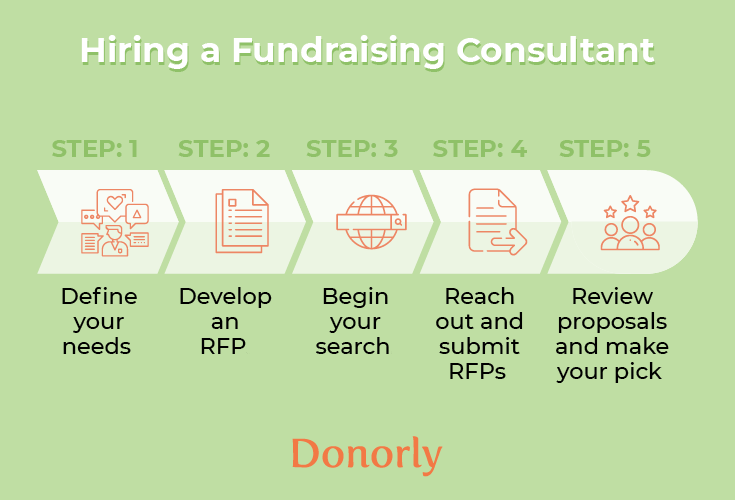Guest blog by Sandra Davis, Donorly
Fundraising lulls happen, whether they’re due to the annual summer slump in giving or caused by changes in the nonprofit sector. While organizations can take steps to weather these slow periods, the real testament to your nonprofit’s fundraising strategy is your plan to bounce back.
Injecting new life into your fundraisers is more of an art than an exact science. There are plenty of reliable, creative strategies that can help you earn your supporters back. During these slow periods, focus on retention and stability, but don’t hesitate to try something new. While this may not be the right time to launch a major program or begin a feasibility study, trying out new engagement strategies can sometimes be exactly what you need to recapture old interest.
This article will explore four ways to help your nonprofit reconnect with supporters, find new audiences, and get your fundraising back on track after a slump:
- Host a new event.
- Launch a new type of fundraiser.
- Try out a new marketing platform.
- Consider hiring a consultant.
How you apply these strategies will differ from nonprofit to nonprofit, as what counts as “new” will be different for each organization. While exploring your options, be sure to assess programs you’ve run in the past and why they did or did not succeed. In some cases, you may have already found a potential winner that just requires a bit of fine tuning.
1. Host a new event.
Sometimes the best way to rekindle your supporters’ interest in your cause is to gather them together for an event. Doing so provides an opportunity to reintroduce your mission and programs to them, while allowing them to socialize with other like-minded supporters.
However, supporters can grow bored of attending the same events year after year. Every nonprofit has a unique set of events they usually run, and what’s overused to one nonprofit might be brand new to another. Here are a few common event types and how your nonprofit can put a unique spin on them:
- Galas. Galas tend to be upscale events that primarily focus on giving guests opportunities to socialize over dinner and music. But you can give your guests even more to do with exclusive performances, auctions, scavenger hunts, private tours, raffles, and more.
- 5Ks. Encouraging your community to get out and exercise can be an effective way to fundraise and bring your supporters together. You can also add extra activities to give your participants’ friends and family more to do during the race. These might include hosting a community picnic, hiring local bands to play live music, and inviting local vendors to set up a mini farmers market.
- Virtual events. “Virtual events” is a catchall term for any event hosted online. Some activities naturally lend themselves to an online format, such as lectures, trivia nights, and auctions. But as broader audiences become accustomed to online engagement and technology continues to advance, pretty much anything can be made virtual these days, even 5Ks, talent shows, concerts, and skill classes.
Consider how you can use these different event formats to change up your event calendar and excite your supporters about something new. Additionally, a new event can be a great opportunity to launch your new fundraising strategy and give it a head start.
2. Launch a new type of fundraiser.
While standard donations are most nonprofits’ bread and butter, sometimes it pays to expand your horizons and try out new types of fundraisers. The end goal of earning donations will remain the same, but your supporters will be able to give in new and interesting ways, which might appeal to them more than routine donation requests.
New fundraisers can include a brief campaign or be incorporated into your regular fundraising strategy. Here are a few fundraising ideas designed to maximize and diversify your revenue:
- Matching gifts. Your supporters want their gift to make a difference, and some of them can be motivated to give more if they know their gift will go farther. With matching gifts, your supporters will be able to increase their gifts with a donation from their employer added on top of theirs, increasing their giving potential and impact.
- Peer-to-peer campaign. Instead of asking for donations directly, consider changing up your messenger with a peer-to-peer campaign. Peer-to-peer campaigns leverage your supporters’ personal connections, giving your nonprofit access to new networks, while also diversifying the voices of those making the asks.
- Passive fundraisers. Passive fundraisers prioritize your supporters’ convenience and might be the solution for nonprofits looking to slowly increase their donors’ involvement. For example, most passive fundraisers involve your supporters making purchases they were already going to make, just with a portion of their spending going to your organization at no additional cost to them.
You can get started with these ideas or explore other options with online resources. Getting Attention’s nonprofit marketing blogs guide recommends a few websites that regularly post about new fundraising ideas catered to nonprofits. Resources like this can be a jumping-off point for finding new fundraisers, events, and best practices, all of which can help you recover after a lull.
3. Try out a new marketing platform.
Are your supporters on the platforms you’re using? Branching out can help you discover new audiences and inject life back into your fundraising base.
For most nonprofits, this will mean trying out a new social media platform. Some platforms are more nonprofit-friendly than others. For example, Twitter’s short form messages and engagement-based algorithm can make it difficult for new accounts to find their footing. While the platform can be helpful in the long run, these factors make it better suited to a long-term investment for established organizations rather than a quick fundraising boost.
By contrast, Facebook provides nonprofits with fundraising tools that make connecting with supporters easier than other platforms. Facebook fundraisers can be hosted by any of your supporters, allowing them to pitch in and help get your organization past its lull.
Additionally, consider how you can improve your website. A nonprofit’s website is the face of its organization, and an engaging design and features can make a strong first impression on new supporters. Plus, sometimes dips in fundraising are caused by bugs or security issues on your website.
Keep in mind that every marketing channel has its own unique rules for success. It’s usually better to err on the side of quality over quantity, so give yourself the time to research and prepare your message for your new channel.
4. Consider hiring a consultant.
Sometimes an outside perspective can provide the answers that your nonprofit has struggled with internally. Fundraising consultants are experts at evaluating nonprofit’s fundraising strategies, identifying areas of improvement, and creating actionable recommendations for success.
Donorly’s guide to fundraising consultants walks through the process of finding and hiring a consultant:

- Define your needs. Why do you need a fundraising consultant and what do you want out of your relationship with them? For a fundraising slump, you can ask for general help with refining and improving your fundraising strategies, but ideally you should get as specific as possible about your nonprofit’s unique situation during this step.
- Develop an RFP. Once you know what you need from a consultant, turn it into a document you’ll submit to potential fundraising consultants. This will be your request for proposal (RFP), and fundraising consultants will use it to create their initial recommendations for your organization.
- Begin your search. There are a variety of fundraising consultants out there with various specialties, business practices, and communication styles. Research consultants online and get recommendations from your colleagues to find consultants who will be able to serve your specific needs.
- Reach out and submit RFPs. After you’ve identified a small pool of potential consultants, reach out to them and submit your RFP. Be sure to first get in touch via email or over the phone instead of submitting your RFP without explanation. This will help establish rapport and an open line of communication from the very beginning.
- Review proposals and make your pick. After a few weeks, consultants will begin sending their completed proposals back for review. Compare each proposal and get in touch with the consultant whose strategy resonates with you as the one that can help you both in the short and long-term.
Hiring a consultant is a multi-step process and it can require a significant amount of time and research. However, investing in these resources will help ensure that your team finds a partner they can work with to continually improve your nonprofit’s strategy.
Fundraising highs come and go, and learning how to navigate the lulls is a core part of running a successful nonprofit. During these off-periods, try experimenting with new fundraisers, events, and best practices to renew supporters’ interest and see if there is a better strategy out there. Additionally, if you find yourself in need of additional help, don’t hesitate to reach out to a fundraising consultant to gain an outside perspective.
Founder and President Sandra Davis leads Donorly with 30 years of fundraising experience and leadership. Sandra has consulted on numerous capital campaigns, led strategic planning and feasibility study efforts, and managed board development and recruitment efforts, planned giving, special events, and annual giving programs. Under her leadership, Donorly has grown to support the fundraising efforts of over 75 clients to date.
What do successful online fundraising campaigns have in common?
 They have specific, achievable goals.
They have specific, achievable goals.
There is a sense of urgency to participate – a matching gift, a deadline.
There is trust built up BEFORE the campaign launches.
There is infrastructure in place to promote the campaign.
Use this free Planner when planning your next online fundraising campaign!
